Stair makeovers: updating your staircase
Stair makeovers: updating your staircase
The staircase is the hardworking backbone of a home, linking floors. So, why not turn it into an eye-catching feature too?
Play with pattern
For a budget-friendly way to refresh your staircase, stick some patterned vinyl tiles onto your timber risers. So long as you have a flat surface, peel-and-stick tiles are relatively easy to attach. Choose one design for the entire staircase or get arty and mix and match different patterns. For example, a Spanish Star Sticker set, from East Urban Home, costs £29.99 for a set of six tiles (prices correct May 2021).
There are so many great designs to choose from ranging from on-trend metro tiles to Mediterranean inspired patterns, says Nadia McCowan Hill, Wayfair’s resident style advisor.
She said: “If you’re unsure how to proceed with peel-and-stick tiles, here are a few pointers. You will need a pristinely clean and flat surface. To make sure the surface is as flat as possible and the finished look isn’t uneven, consider repairing any existing imperfections. Trim and cut your stickers to fit with a sharp pair of scissors or a cutter knife before you remove the backing. You can then remove the backing and start sticking—and voilà, welcome to your “new” staircase.”
Be bold with paint
Painting stairs in a vibrant colour is another cheap and cheerful revamp that can totally transform a Victorian terrace staircase, for instance. Be bold. Think bright yellow or cornflower blue. Neon pink even. Adding a splash of colour will brighten a dark, narrow staircase. If you want to paint a pattern on the risers try using a stencil. If not the steps, then you can always freshen up the balustrade with a modern shade. Small changes can make a big difference to your home.
Invest in a new carpet
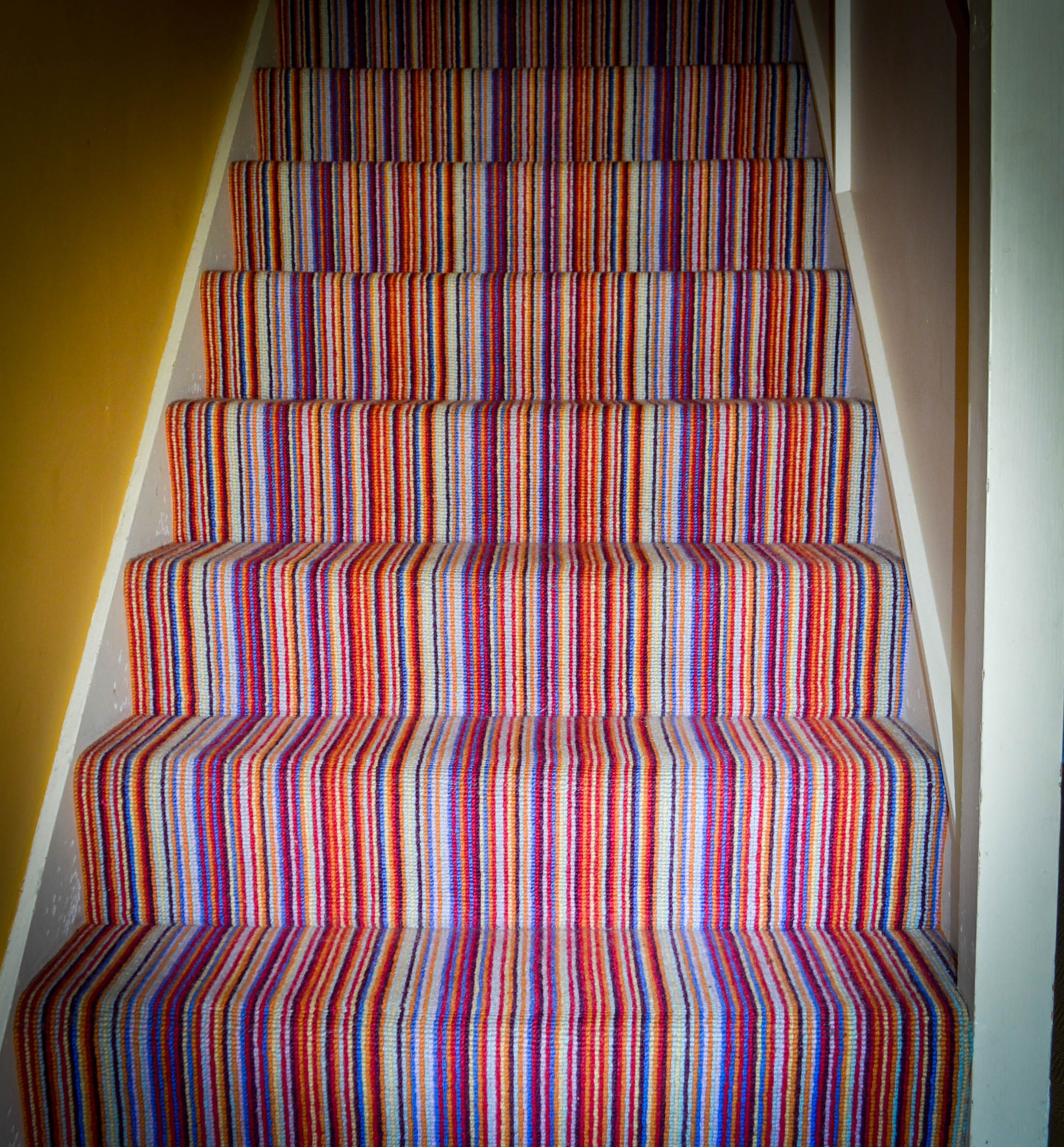
Don’t underestimate the power of carpet to change the whole vibe of your hallway. Whether you opt for a full width carpet or a fitted staircase runner, striped carpets are always a popular choice although they can be expensive.
If you prefer a plain carpet, then it’s best to stick to neutral shades. Deep and dark colours can narrow spaces like hallways, stairs and landings and show every bit of fluff. But bear in mind that white and pale shades can stain easily. Mid tones are the most practical. Choose an 80 per cent wool (the most naturally resilient fibre) that is labelled ‘heavy domestic’ or ‘extra heavy domestic’ to cope with the high traffic of a staircase and landing. Patterned rather than plain designs will help hide any wear and tear.
Revamp your balustrade
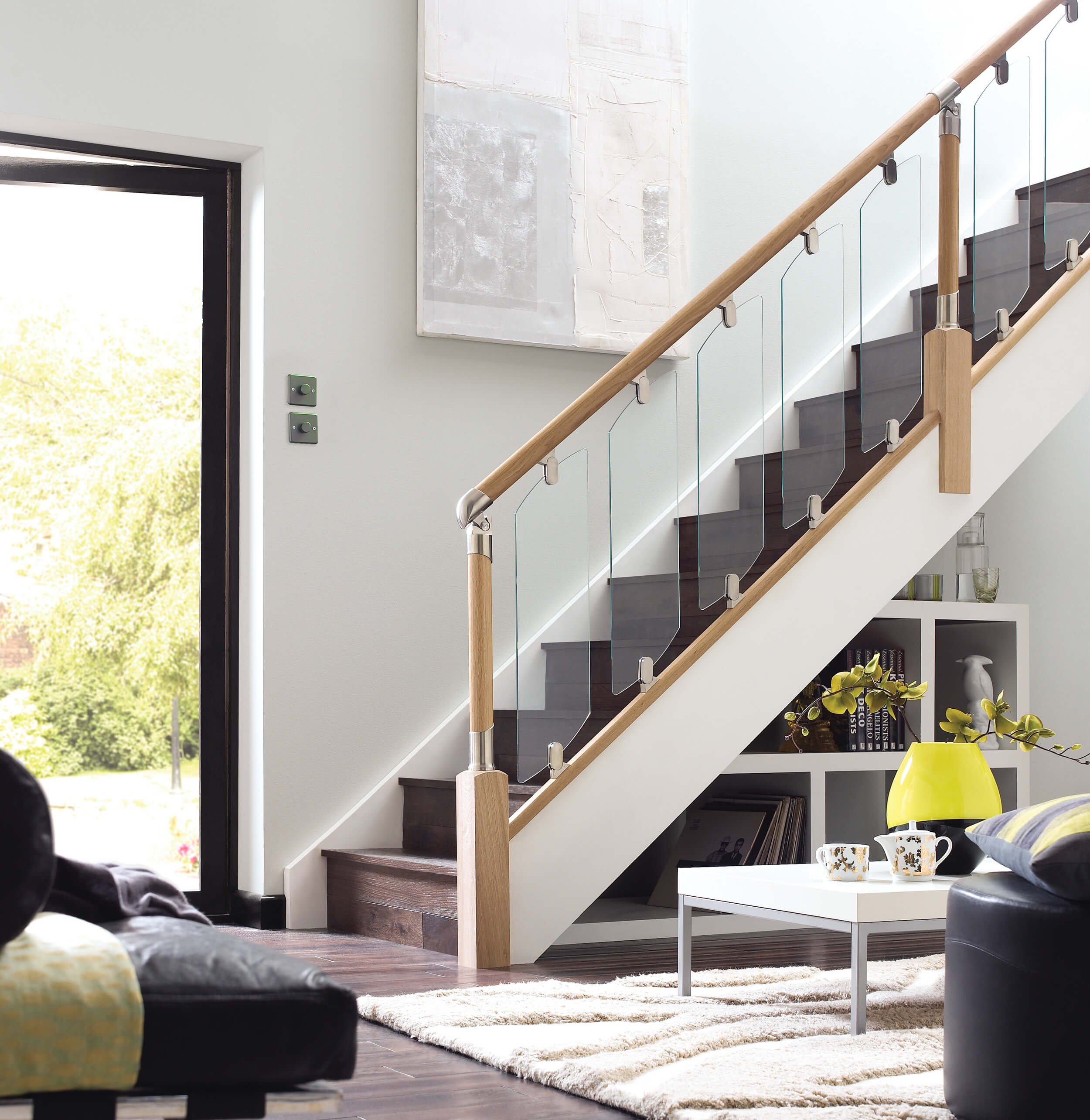 Image supplied by Richard Burbridge
Image supplied by Richard Burbridge
If your staircase is structurally sound, it may simply need renovating and a bit of TLC. Updating your balustrade will give your staircase a new look without costing a fortune. Swapping a basic timber balustrade for a contemporary glass one will instantly update it. Don’t be afraid to mix materials, such as a glass balustrade with solid oak handrail – a popular choice. Not only will it create more light in your hallway but is a stylish focal point too. Brushed chrome or stainless-steel can also be used in combination with both wood and glass stair parts.
Renovate your staircase
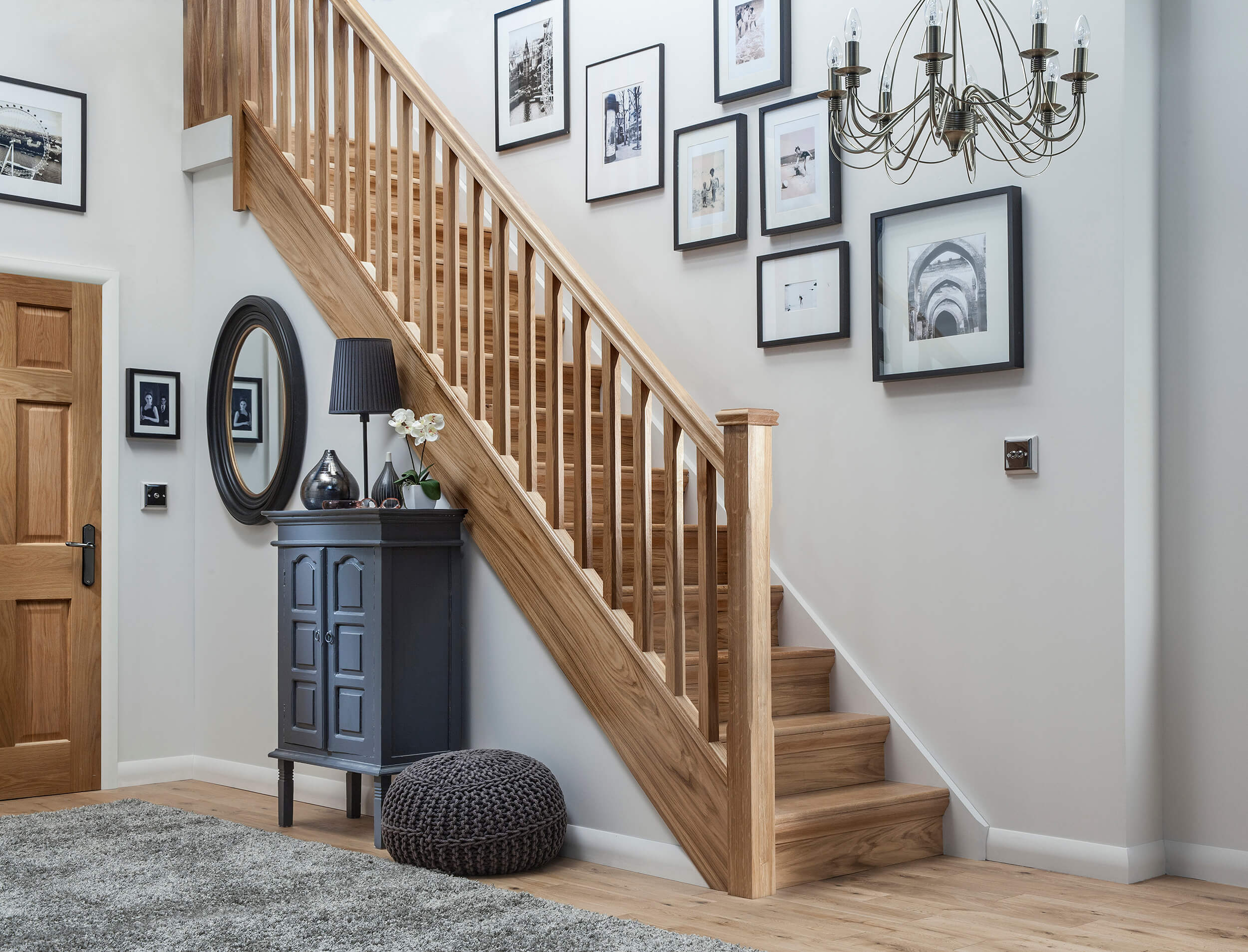
Image supplied by Richard Burbridge
There are specialist companies that will strip your staircase back to its bare bones and then upgrade the newel posts, balustrading and treads in the material of your choice (timber, glass, metal) to totally transform its appearance. Or you can hire a local joiner to a similar job. If required, your old staircase can be strengthened as part of the work. Staircase renovations don’t come cheap – expect to pay around £2,000-plus. That said, it can look like you had the entire staircase replaced with a new one.
Consider a different style
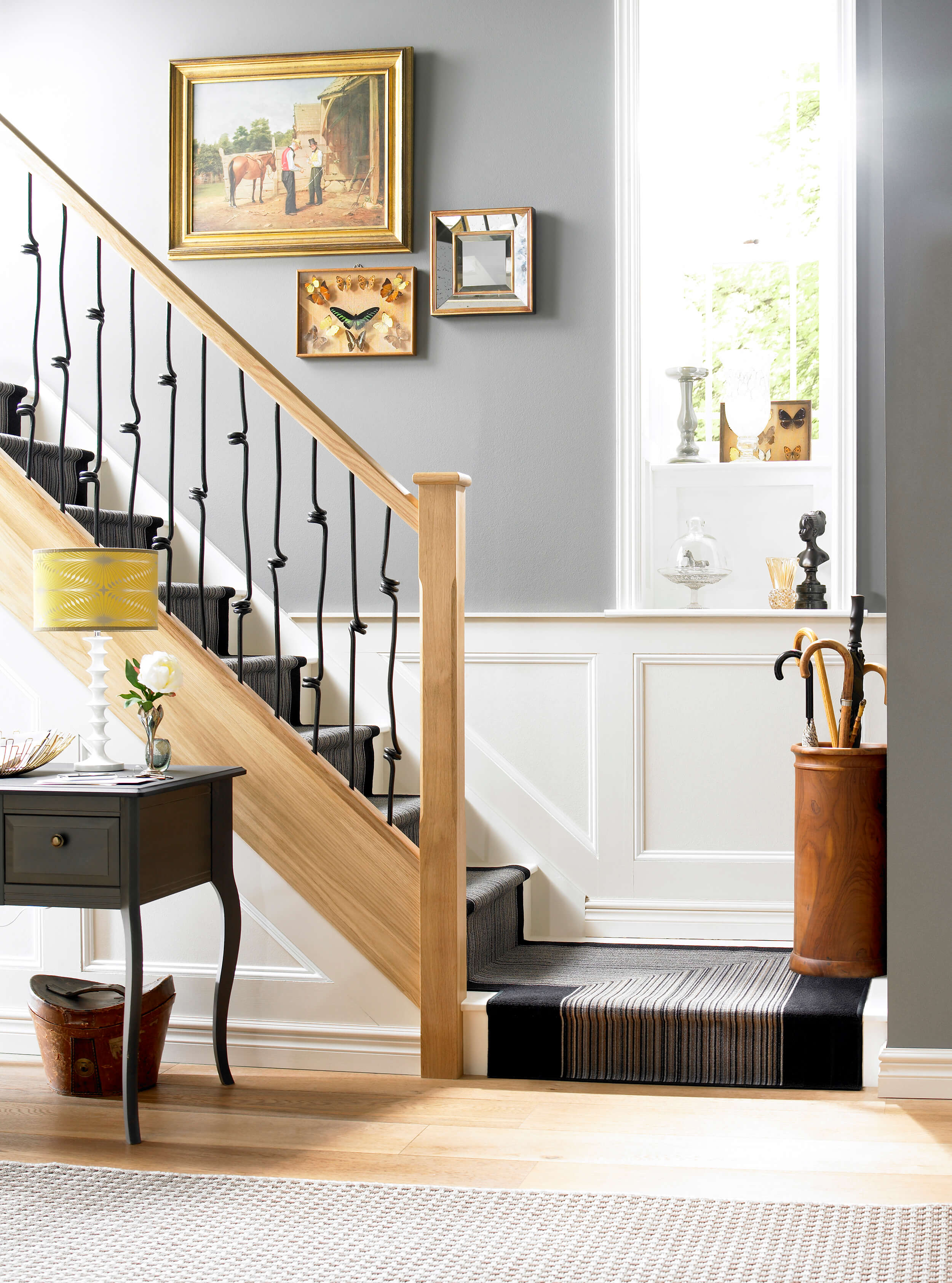
Image supplied by Richard Burbridge
If you are extending your home, relocating your staircase elsewhere in the hallway could release valuable floorspace and improve flow. If you have an architect on board, they may suggest different options for positioning and ascent/descent directions to maximise available space. They can also advise you on different styles as well as minimum headroom through to balustrading requirements.
Relocating your existing staircase, is a chance to make it a statement feature with real wow factor.
Choose new materials
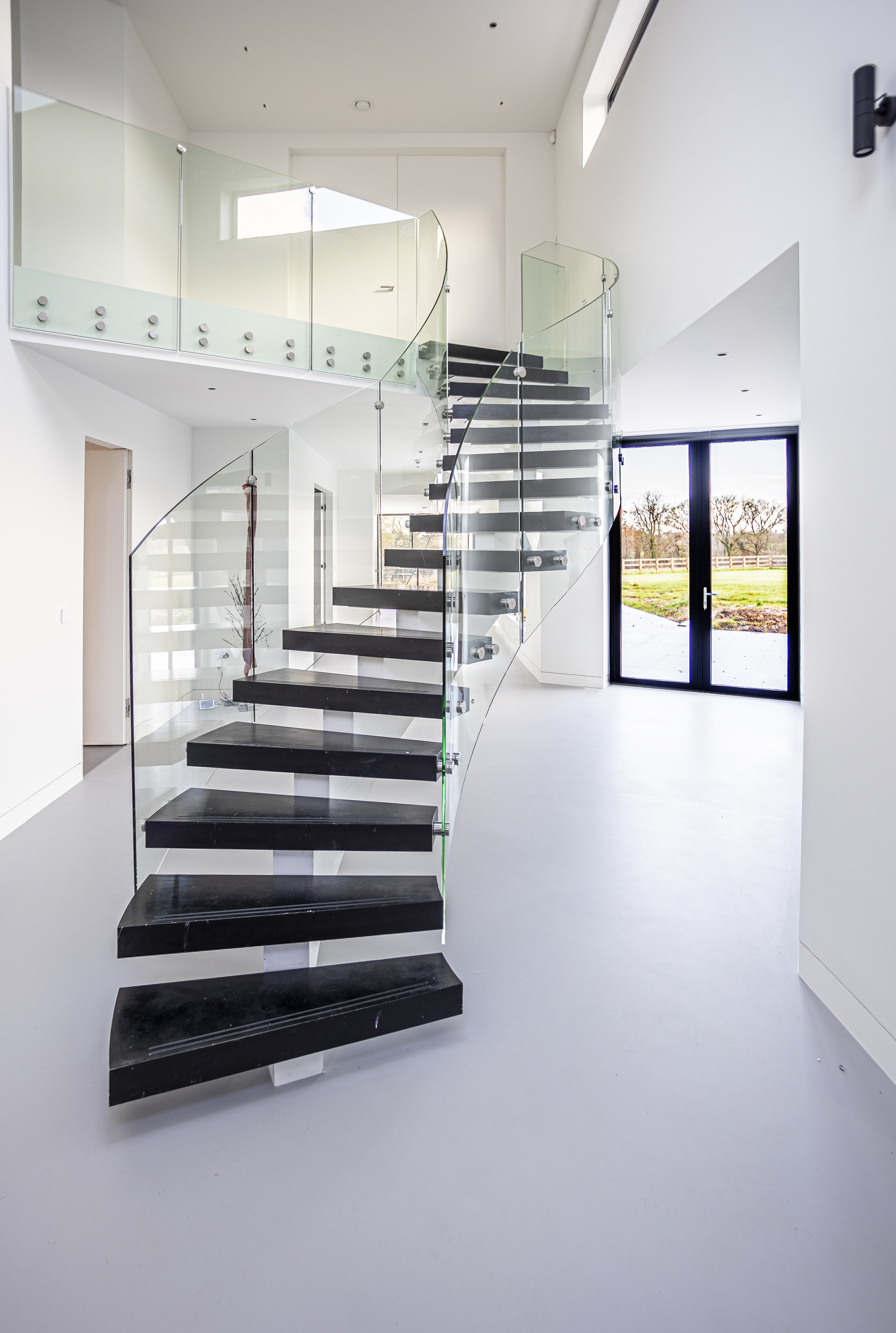
Image supplied by Masker Architects
Most homes have staircases made from wood. Robust and strong, timber staircases can be updated with a contemporary design. However, if you are installing a new staircase, you may want to be a bit more adventurous in your choice of materials. Glass and stone staircases look super stylish and sophisticated as in this new home designed by Masker Architects. This can work especially well if the house is open plan as light flows through glass, so the space isn’t divided up or interrupted. Other options include black steel to create an industrial chic aesthetic.
Hard surfaces like glass, steel and concrete aren’t always practical for a family home with children or elderly people.
Light the way
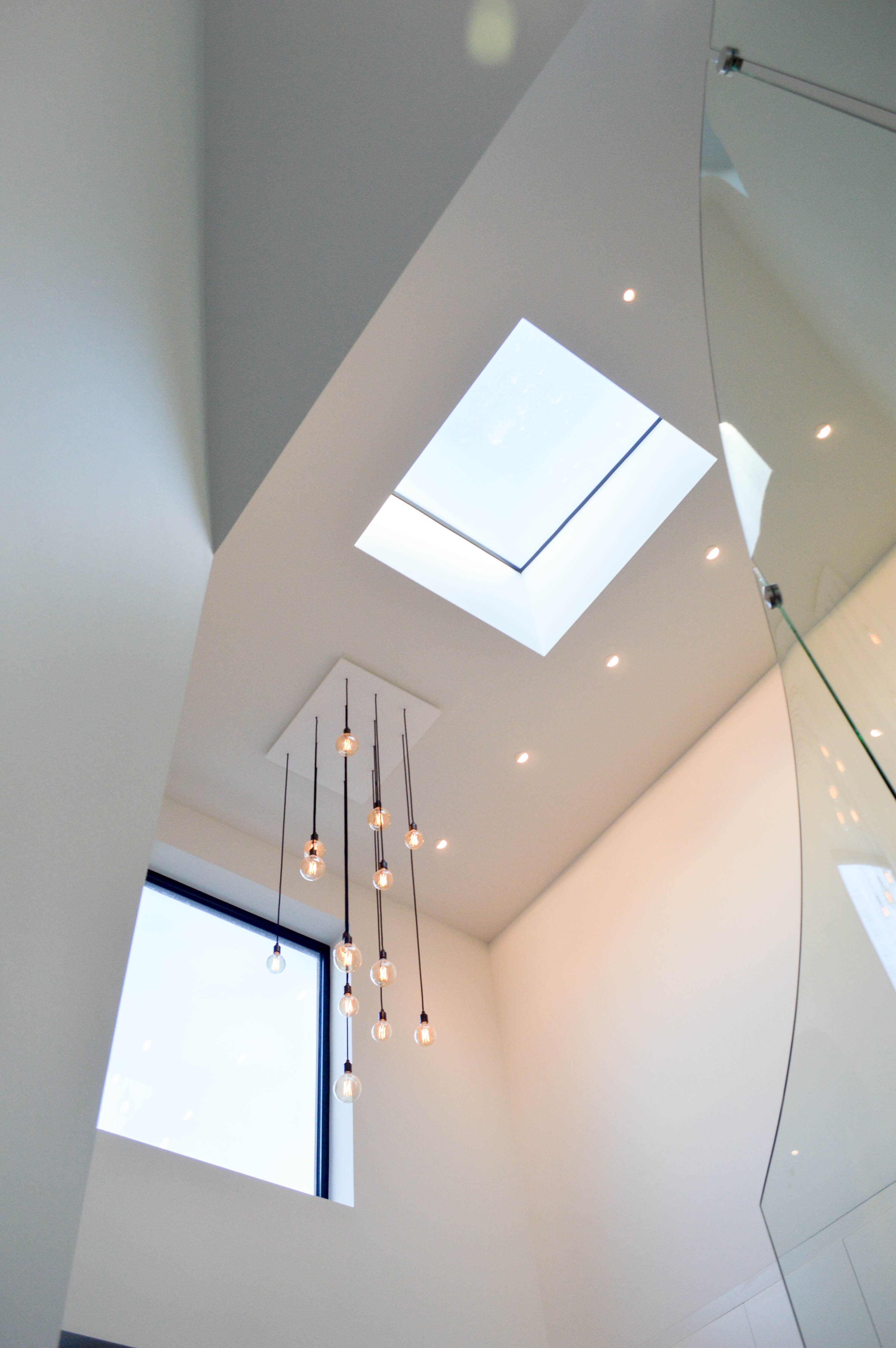
Image supplied by Masker Architects
A good lighting design will enhance any staircase. Recessed wall lights can illuminate a hall beautifully. For open riser staircases, the light source can be hidden under each tread and give a wonderful glow. An LED strip either side of the staircase can lead you up a flight, step by step, but take care you don’t end up with a staircase that look like it belongs in a cinema – unless that’s the effect you want to achieve. Or you may want to add a statement pendant light to instantly inject wow factor in a hallway. Remember any lighting must be installed by a registered electrician and comply with Building Regulations.
The staircase is often the first thing people see on entering your property, so it’s worth spending time and money on it – whether it’s a quick facelift, partial update or a complete redesign.
